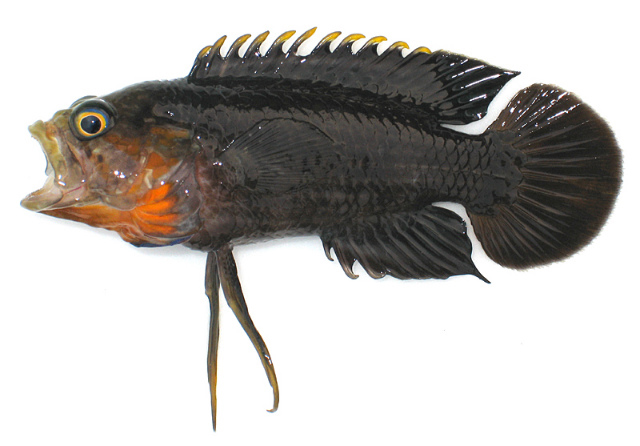| Plesiopidae (Roundheads), subfamily: Plesiopinae |
| 7.7 cm TL (male/unsexed) |
|
reef-associated; marine; depth range 0 - 12 m |
| Western Pacific: Japan south to Australia; east to Solomon Is. |
|
Dorsal spines (total): 12-12; Dorsal soft rays (total): 6-7; Anal spines: 3-3; Anal soft rays: 7-10. Description: Characterized by generally brown color with diffuse mottling; pair of dark marks behind eye, another on side of snout; narrow dark band below eye; opercle with diffuse orange area; rows of dark brown spots corresponding with horizontal scale rows; spinous part of dorsal fin with yellow tips; tubed lateral line scales 18-20+7-13; midlateral scale series 23-25; cheek scale rows 3-4 (Ref. 90102). |
| Adults occur inshore (Ref. 7300) at depths of 12 m or less in dead coral, reef flats, and on coral heads, habitats with somewhat less wave energy (Ref. 27772). Eggs are guarded by the male parent (Ref. 205). |
|
Least Concern (LC); Date assessed: 22 April 2022 Ref. (130435)
|
| harmless |
Source and more info: www.fishbase.org. For personal, classroom, and other internal use only. Not for publication.

